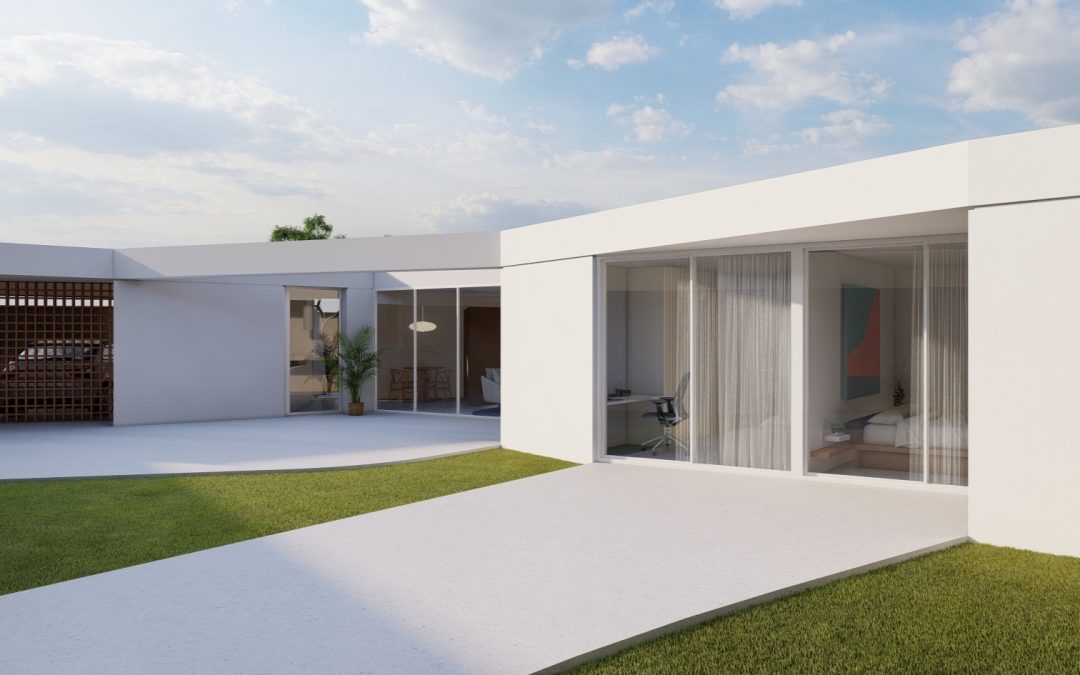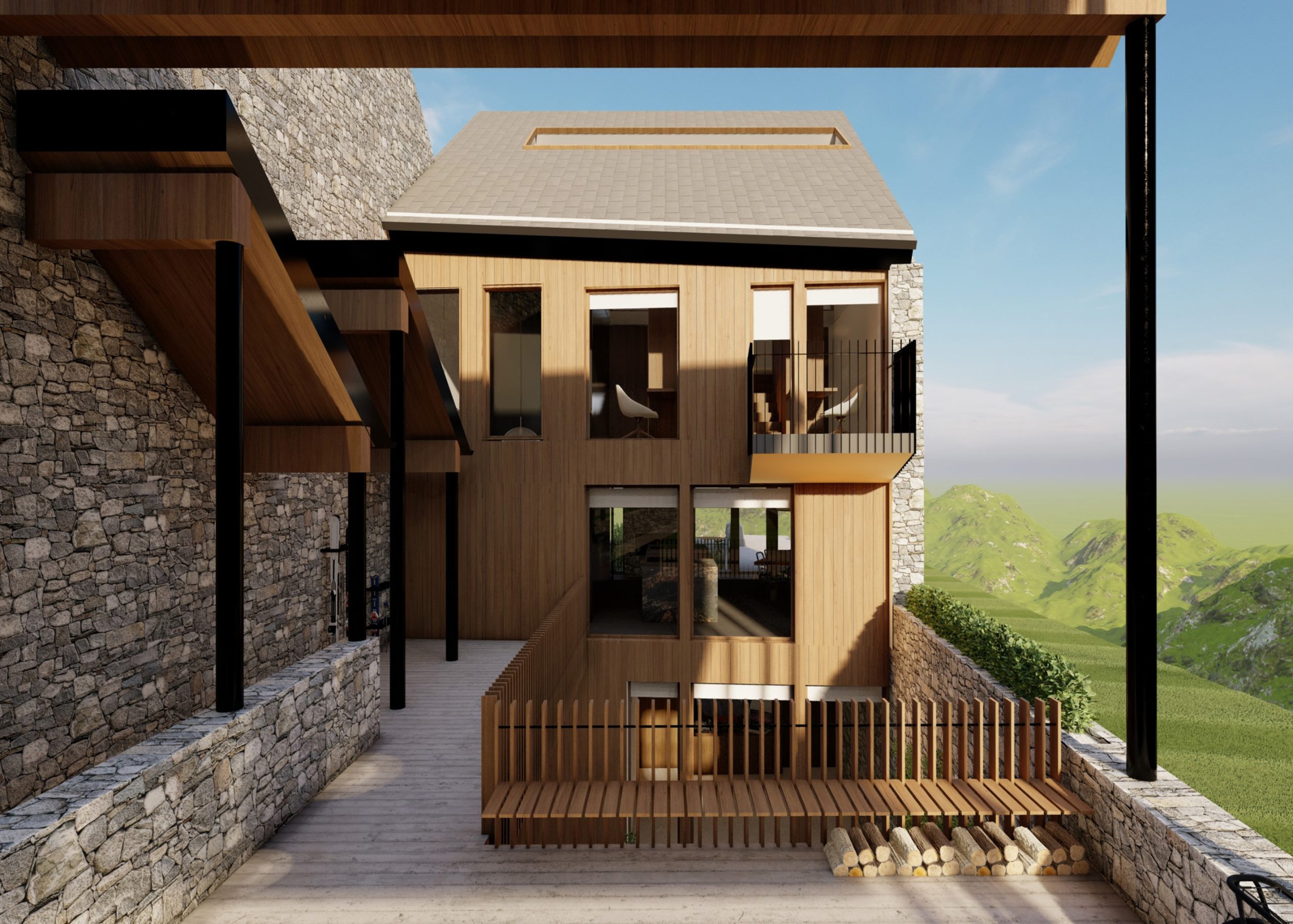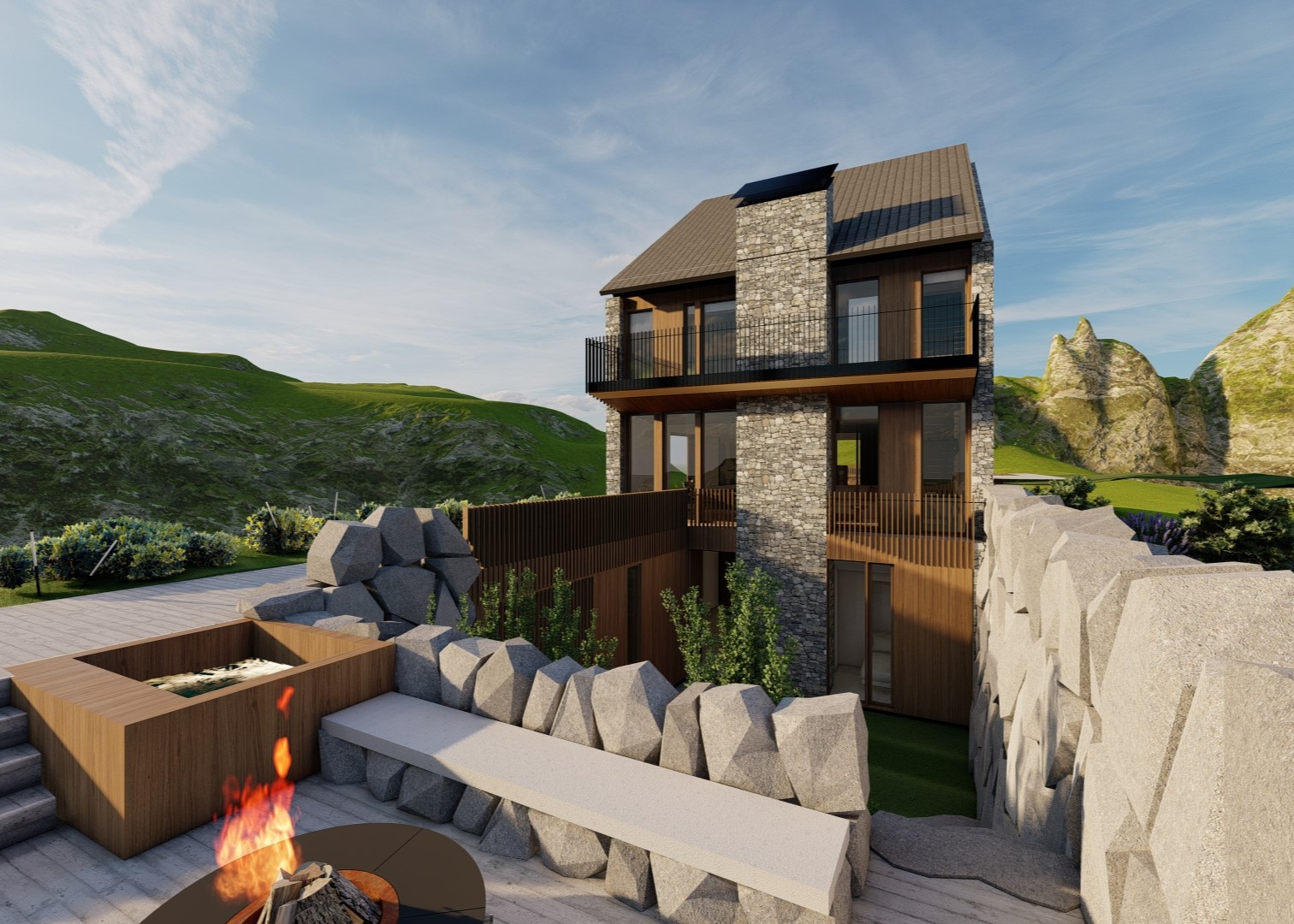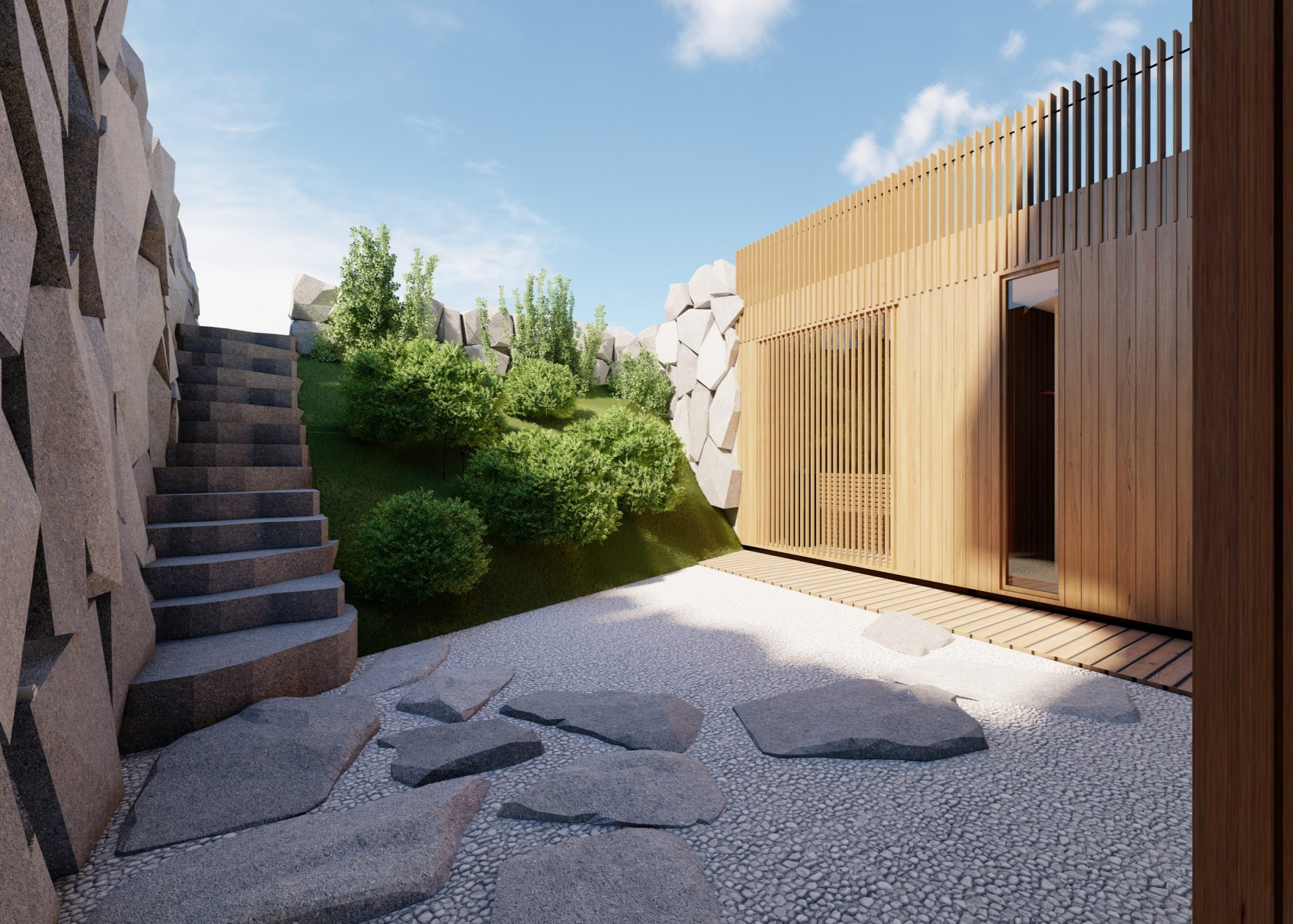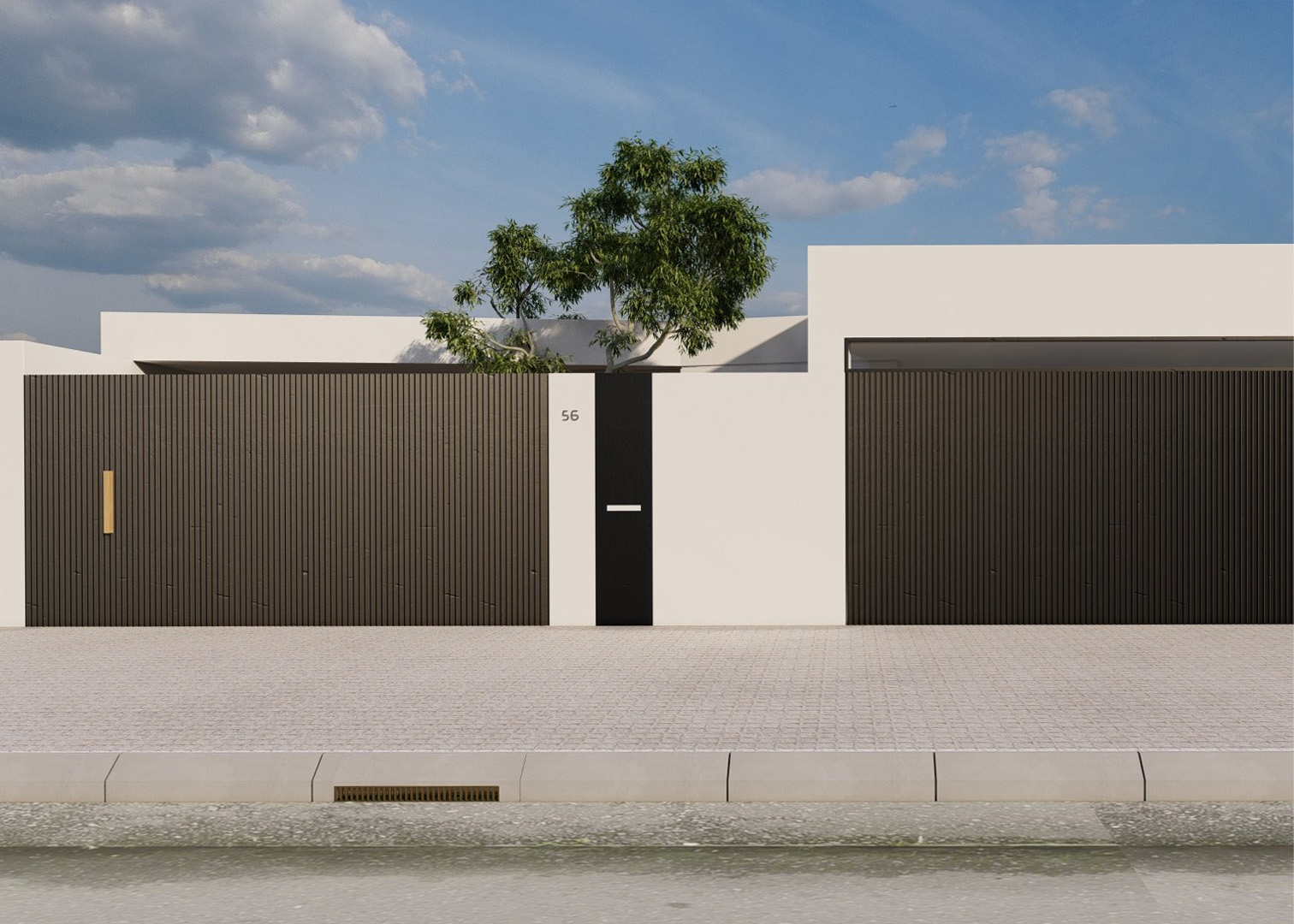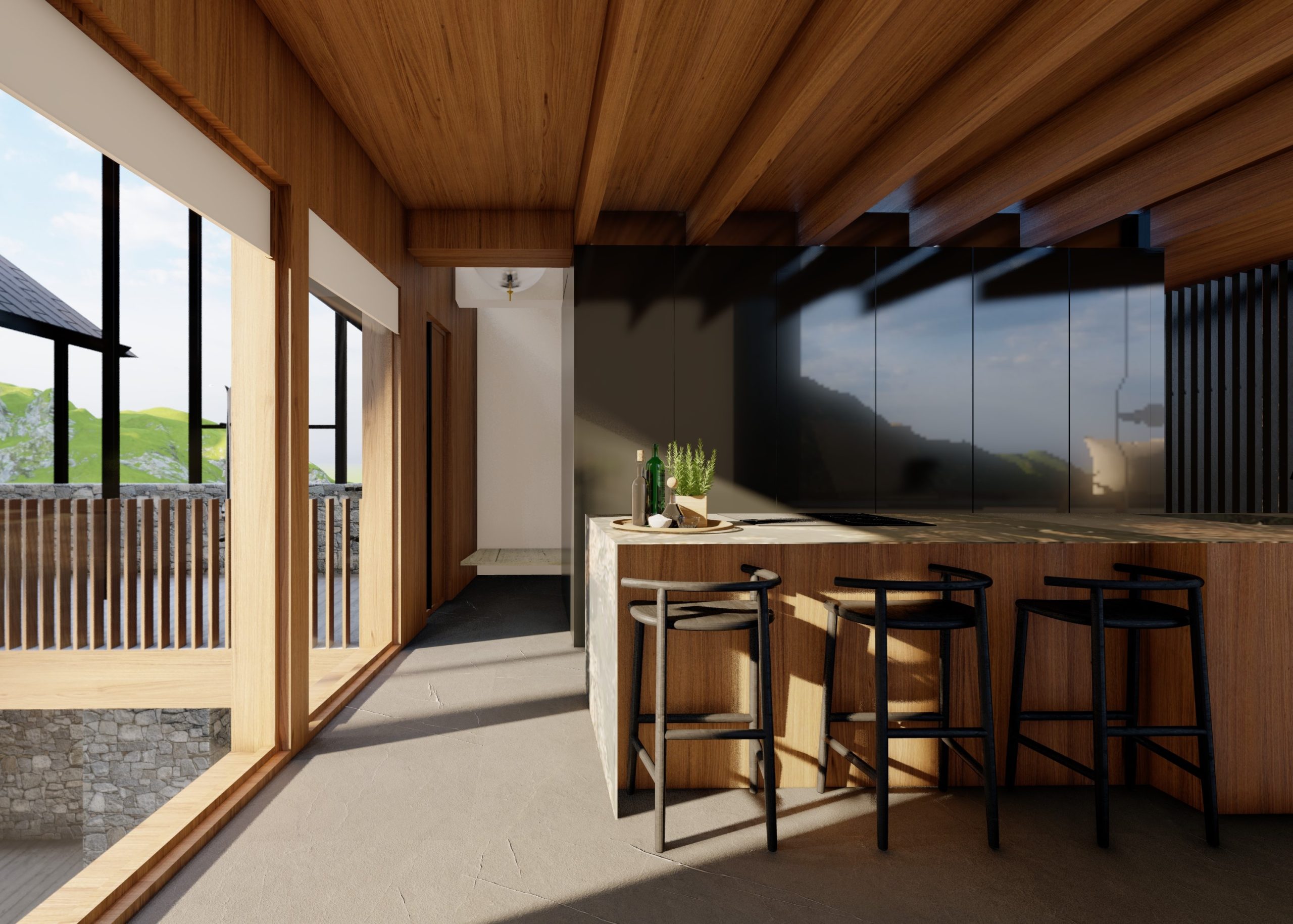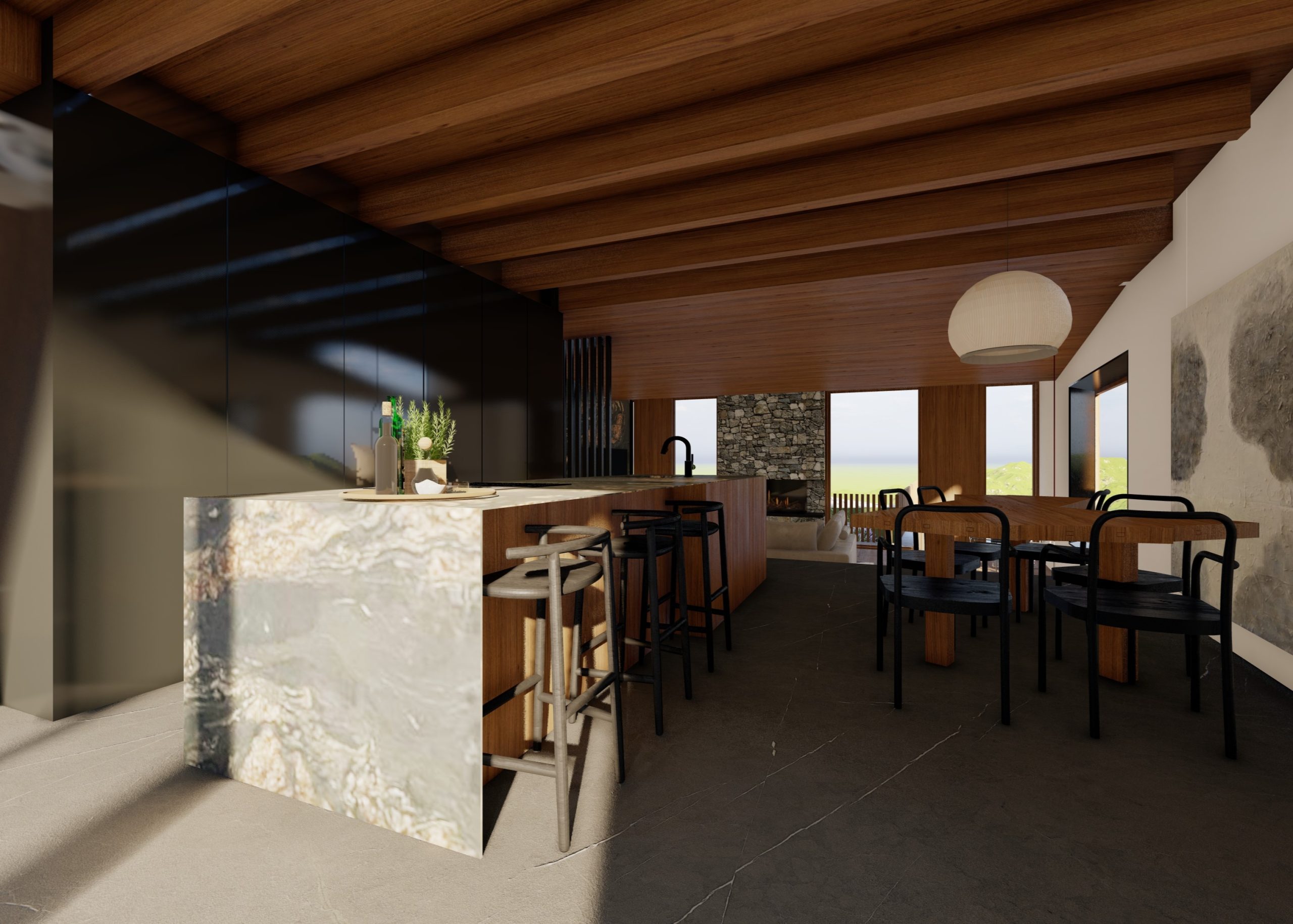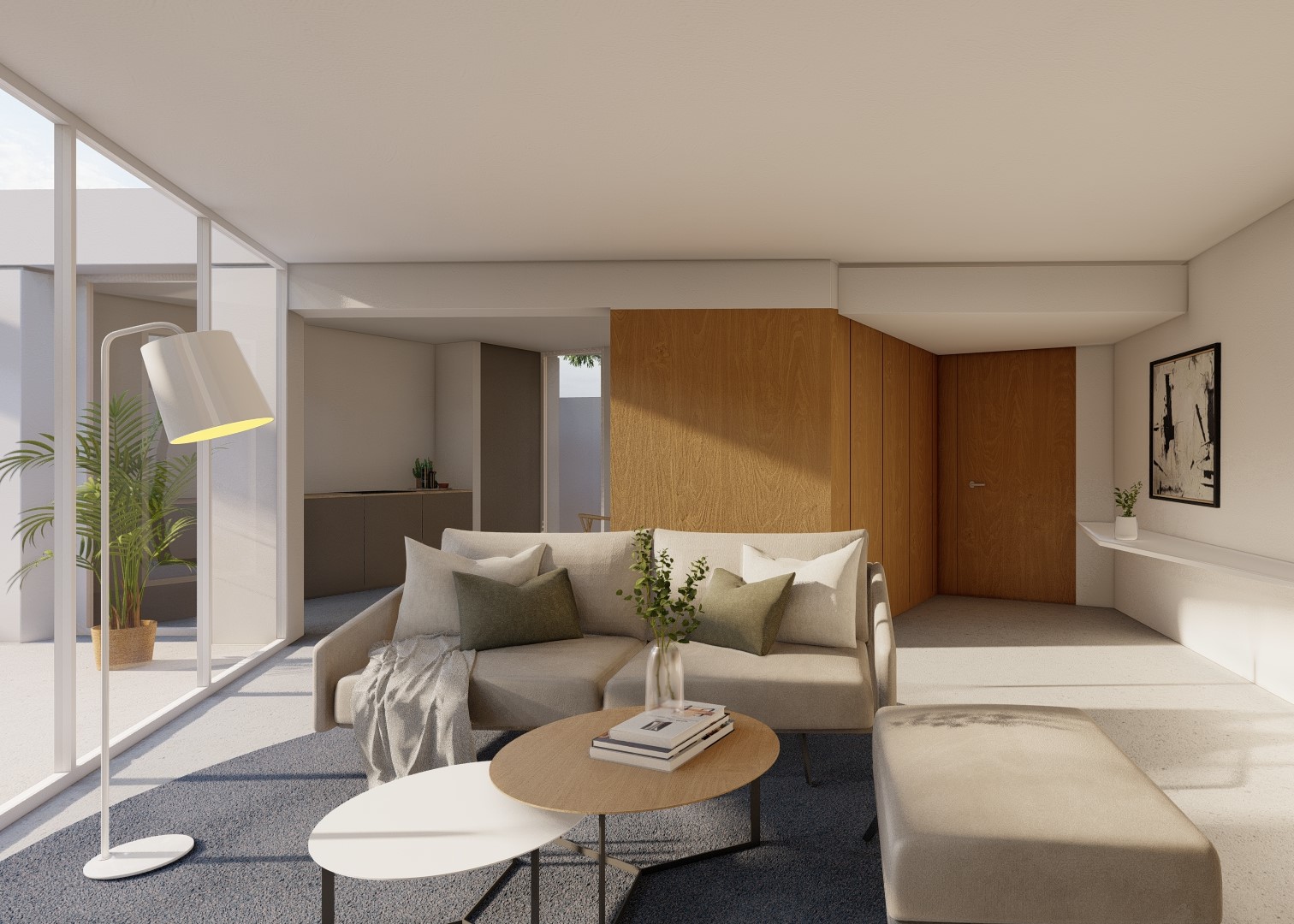What is a modular home?
Modular housing is based on an advanced construction system, in which independent modules are manufactured with great precision and then assembled on site.
Although industrialized components are used, it is not a standard prefabrication. Each project is completely customized, since this construction allows us to respond to a diversity of programs, locations and styles.
How much does a modular home cost?
There is no closed figure: the price of a modular home depends on many factors that go beyond the construction system itself. What we can say is that the cost is aligned with the value it offers. Unlike other types of housing, modularity allows greater control over the process and time, reducing unforeseen events and increasing the final quality of the result. This does not necessarily make it cheaper, but it does make it more efficient.
Factors influencing the price of a modular home
When we talk about high quality modular architecture, such as the one we develop in Cronotopos, it is important to understand the factors that influence its cost. Beyond the construction system, there are multiple variables that determine the final budget:
- Built surface: as in any project, the scale directly influences the budget. The larger the surface area, the greater the investment in materials, labor and execution.
- Level of customization: although it is a customized system, the more design, material or distribution decisions are made, the higher the associated cost.
- Materials used: at Cronotopos we are committed to noble and sustainable materials, selected not only for their aesthetic value, but also for their energy efficiency and durability over time.
- Plot implementation: factors such as accessibility, topography or terrain conditions can significantly influence the final cost, as they require specific adaptations to the project.
- Level of finishes: from the type of flooring to the interior or exterior carpentry, high quality finishes increase the value – and also the budget – of the house.
Modular construction vs. traditional housing
Comparing modular housing with traditional construction does not imply talking about “cheaper” or “more expensive”, but about two systems with different logics. Let’s look at the five fundamental pillars on which they differ.
Construction process
The prefabricated structure of the modular one is worked in controlled environments, which improves precision. The traditional one is executed entirely on site, with greater exposure to unforeseen events.
2. Deadlines and predictability
Modular construction reduces time and allows for more accurate planning, unlike traditional construction, which often faces delays and adjustments along the way.
3. Cost and control
The modular system offers greater budgetary control from the beginning, since it saves all the accumulated cost overruns due to changes or unforeseen events of traditional construction work.
4. Sustainability
Modularization generates less waste and optimizes resources, as opposed to the traditional method, which depends more on on-site management and tends to have a greater environmental impact.
5. Quality and finish
Industrial precision guarantees consistent finishes, impossible to achieve in the traditional way, as the result depends on the process conditions.
Design and value: why choose modular housing?
Opting for modular housing means choosing an architecture adapted to the new times. It is a flexible, agile and sustainable system that allows us to design with freedom and execute with rigor. At Cronotopos, each modular project is approached with the same requirements as any other home: from respect for the environment to attention to detail. And although its price may not be lower than that of a traditional construction, the value it brings to those who live in it goes far beyond the economic aspect.
Experience and method: is it really worth it?
At Cronotopos we have been successfully applying the modular system for years in projects all over the country. This experience has allowed us to consolidate our own method, based on the balance between technique, design and customization. Thanks to a well-defined and controlled process, we can guarantee high-level results both in design and execution, always integrating our vision: an efficient, conscious architecture designed to last, live and evolve.
For these reasons, our answer is yes, it is worth betting on modular housing, understood as an investment in quality of life. It is not just paying for a house, it is opting for a safer way of building, more conscious and aligned with the future.

